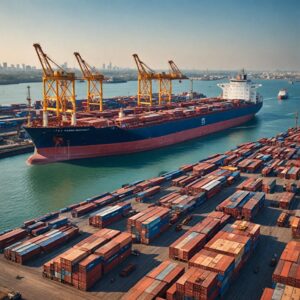
A shopper walks past shelves of cooking oil for sale at a supermarket in Beijing on October 15, 2025.
Pedro Pardo | Afp | Getty Images
Highlights
- President Trump’s tariffs are projected to cost global businesses over $1.2 trillion by 2025, with consumers absorbing most of this burden.
- While administration officials claim exporters will bear more costs, a recent S&P Global analysis indicates consumers may ultimately shoulder two-thirds of the expenses.
- The evolving tariff landscape and the resulting shifts in supply chains are critical for economic recovery and monetary policy adjustments.
Understanding the Tariff Impact
The far-reaching implications of President Donald Trump’s tariffs on global trade and economic stability have been underscored by a recent analysis from S&P Global. By 2025, these tariffs are projected to impact global business expenses by over $1.2 trillion, with consumers likely paying the majority of the costs. This revelation challenges the narrative put forth by the White House, which suggests that the financial burden primarily falls on foreign exporters.
The S&P report consolidates data from around 15,000 sell-side analysts and 9,000 companies, revealing that while companies are expected to incur significant losses, the lion’s share of the tariff-induced costs—estimated at around two-thirds—will ultimately affect consumers. This substantial economic shift raises questions about the effectiveness of the tariff policy in addressing trade imbalances.
Dissecting the Economic Dynamics
The analysis dives deeper into the mechanics behind these tariffs, which act as indirect taxes that siphon wealth from corporations to governments and various stakeholders. As logistics delays and increased freight costs compound the pressure on supply chains, consumers find themselves facing higher prices for decreased quality in goods. According to lead author Daniel Sandberg, the situation reflects a systemic wealth transfer that can’t be overlooked.
Additionally, the White House maintains that long-term benefits will justify current disruptions, stating that diverse supply chain strategies are already underway with U.S. companies responding by onshoring production. However, economic analysts forecast a contraction in profit margins due to these increases. This erosion of profitability raises significant concerns over whether corporate recovery trajectories will eventually stabilize or if companies will continue to struggle amidst ongoing tariff tensions.
Exploring Future Implications
As various economic sectors grapple with the realities of these tariffs, the broader implications extend to monetary policymakers at the Federal Reserve. The tariffs have raised doubts about inflationary pressures affecting economic stability, which could shape future interest rate adjustments. Analysts expect profit margin contractions to narrow, but the success of this optimistic recovery is contingent upon how firms react to shifting market conditions and evolving supply chain needs.
Crucially, developments in U.S.-China trade relations and Trump’s tariff strategy will significantly influence future economic landscapes. The recent removal of the “de minimis” exceptions for low-priced goods symbolizes a pivotal change. This move has intensified challenges within global trade, potentially signaling long-term shifts in how tariffs function within the international market. These factors may redefine the operational strategies of businesses moving forward.
Conclusion: The ramifications of President Trump’s tariffs are extensive and multifaceted, highlighting the intricacies of global trade and economic policy. As consumers prepare for the financial implications of these tariffs, the question remains: How will businesses adapt their strategies to overcome these challenges? Are the anticipated benefits of these tariffs worth the profound impact on both industries and consumers? What role will government policy play in shaping the future of our economy?
Editorial content by Jordan Fields

















